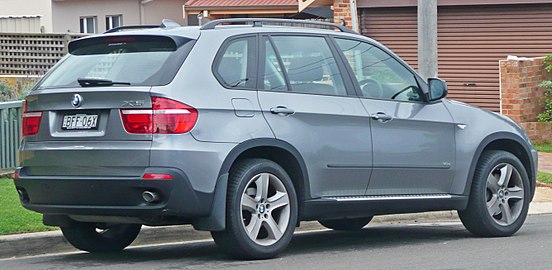Name: BMW X5 Le Mans
Debuted: 2000 Geneva Motor Show
Specs: V12 engine with 700 horsepower and 531 pound-feet of torque, rear-wheel drive, 0-62 mph in 4.7 seconds, 173 mph top speed
Why We Remember It Now:
With an engine sourced from the iconic McLaren F1, the one-off X5 LM remains to this day the most powerful SUV that BMW has ever made.
Long before BMW had an M version of its X5, the Bavarians came up with something even more intense. Billed as being an experimental vehicle, the Le Mans (LM) received its name as a nod to the engine that was lurking underneath its vented hood. A naturally aspirated 6.0-liter V12 sourced from the Le Mans-winning McLaren F1 race car and also used by the BMW V12 LMR was crammed inside the engine bay to create the world’s only X5 with twelve-cylinder power.
In this application, the legendary mill pushed out a healthy 700 hp (514 kW) and a torquetastic 531 lb-ft (700 Nm) at 5,000 rpm. It still packs more horsepower than today’s $100,700 X5 M, which uses a biturbo 4.4-liter V8 dialed to 575 hp (423 kW). Comparing the torque figures, the unique LM is slightly down as the beefiest X5 money can buy pushes out 553 lb-ft (750 Nm) thanks to its pair of turbos.
It goes without saying there are some other big differences between the two SAVs. Just to give you a couple of examples, the McLaren F1-powered behemoth was rear-wheel drive and had a six-speed manual gearbox whereas today’s X5 M features xDrive and an eight-speed Steptronic transmission.
Other BMW concepts from the series: 1999 BMW Z22: Concept We Forgot 1995 BMW Z21: Concept We Forgot Concept We Forgot: 1972 BMW 1602eCompared to an X5 of those days, the Le Mans concept had a stiffer suspension setup lowering the ride height by 1.18 inches (30 millimeters). On the outside it looked just about the same as the regular production model, with the exception of the 20-inch wheels shod in chunky 315/35 at both axles. BMW never released details about the vehicle’s weight, but it did say it was distributed 51:49 front/rear, so almost perfect.
The engineers went to the trouble of modifying the interior by installing four bucket seats with frames made of aluminum also used on the center tunnel and other areas throughout the cabin. They also got rid of the radio and instead installed three dials providing the driver with various info on the center console.
In terms of performance, the X5 Le Mans needed 4.7 seconds to reach 62 mph (100 kph), so it was half a second slower than the current X5 M. The official top speed was 173 mph (278 kph), but later on it actually managed to hit 193 mph (310 kph) on the Döttinger Höhe section of the Nürburgring.
Speaking of which, Hans-Joachim Stuck managed to do a lap of the ‘Ring in 7 minutes and 50 seconds, so about nine seconds less than the Porsche Cayenne Turbo S – officially the fastest production SUV around the challenging track with a 7:59 lap time. Considering the LM was built 17 years ago, the performance is even more impressive.
BMW said right from the beginning the X5 Le Mans was purely a one-of-one project, without any intentions for series production, not even a tiny one. BMW will make up for lost time by giving the X7 flagship SUV the V12 treatment in the years to come.
With McLaren saying it won’t ever build an SUV, this is kind of the closest thing.
Note: The first video below is in German, but the V12 speaks to us all.

BMW X16 F116 Wikipedia
116 BMW X116 sDrive 16116i RWD L161616L Turbo Jump Start Wiki Auto

BMW X16 Wikiwand

BMW X16 E16 Wikipedia

BMW X16 M F816 Need for Speed Wiki Fandom

BMW X16 E16 Wikiwand

BMW X16 Wikiwand

BMW X16 G016 Wikiwand

BMW X16 E163 Wikipedia

BMW X16 E16 Wikiwand

BMW Motorsport X16 xDrive16i Forza Wiki Fandom

BMW X16 E16 Wikipedia
BMW X16 WIKI
16 Bmw X16 Wiki

Bmw X16 Wiki

File16 BMW X16 F116 sDrive216d wagon 161616 16jpg